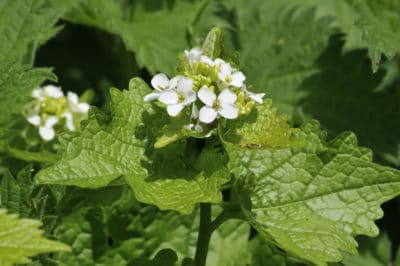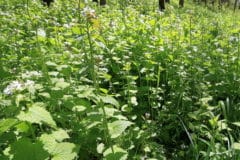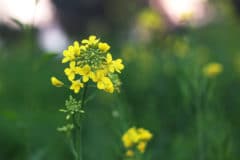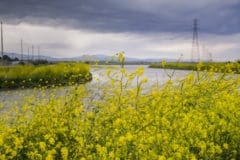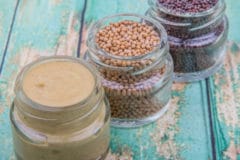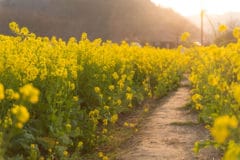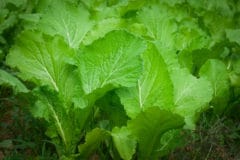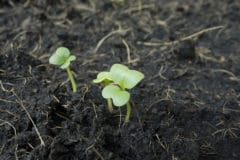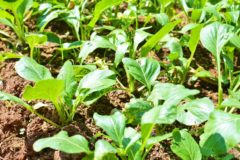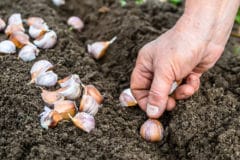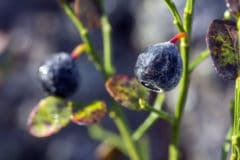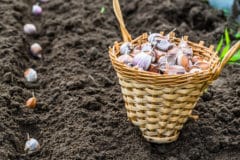Description
Garlic Mustard is a biennial herb native to:
- Europe
- Western Asia
- Central Asia
- Morocco and North Africa
- The British Isles
- Scandinavia
- Pakistan
- Western China
In the first year of growth, plants stay low to the ground producing a wrinkly cluster of leaves. In its second year, the plant elongates to a maximum height of around 40 inches and produces clusters of white flowers.
The flower, shaped like a cross, gave rise to the name ‘cruciferous’ which refers to the family of vegetables cultivated from the original wild mustard green. In midsummer of the second year, the flowers wilt and seed pods form. Thousands of seeds come out of each pod. They can be used whole as a stand-alone flavoring, or they can be crushed and mixed with vinegar to produce the modern yellow sandwich condiment.
It is self-fertile and outside of its native range an invasive weed. It can choke out native plant systems and establish itself as a stable forest understory, thriving in sun or partial shade.
History
Garlic mustard, a member of the wild mustard family, is the oldest known cultivated crop in Europe, with references that date back to between 4100-3750 B.C.E. From this little weed came all of the popular green vegetables today in the Brassicaceae family like kale, broccoli, and cabbage.
Ancient Europeans ate the young leaves raw and cooked, used the flowers to add flavor to wine, and used the seeds as a spice. Early writings on the plant claim that it was used as a disinfectant.
When settlers brought the plant to the new world, they released it as a food source. It quickly naturalized in a foreign ecosystem where it had no natural predators. Insects and animals in North America will not eat it, and it is even poisonous to some native butterfly species.
Noxious Weed or Useful Herb
Garlic mustard is both a noxious weed and a useful and flavorful herb. In its native range, it poses no threat and can be cultivated for its unique properties. In the Americas it should not be cultivated due to its tendency to escape cultivation and spread into the wild where it suppresses native plant growth.
One positive aspect of it being invasive in North America is that if you find it in the wild, don’t hesitate to harvest it all. Noxious weed or not, it still lends flavor to dishes and the seeds can be crushed to make the modern condiment of the same name.
